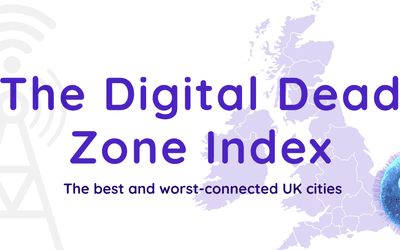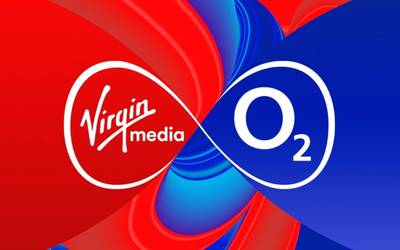What is streaming?
Streaming delivers content over the internet direct to your devices. You can listen to your top tunes or watch favourite TV shows or films all online without having to download any data or files. When you stream, the media file such as a song or movie is stored remotely on a server, not on your smart TV, laptop, smartphone or tablet. As streaming content is online, you can watch or listen in real time or on-demand.
Understanding broadband speed for streaming
Broadband speed is measured in megabits per second (Mbps), which determines how quickly data is downloaded to your device. Streaming video requires a stable internet connection with enough bandwidth to handle the resolution and quality of the content.
Most fibre broadband connections should be able to handle you streaming without too many problems, but it also depends on what format you like to stream your content.
Recommended speeds for popular streaming services
Each streaming service has its own recommended minimum speeds for different video resolutions. And each will automatically choose the best video quality for your device.
| Resolution |
Minimum Speed Requirement |
| SD (Standard Definition) |
3 Mbps |
| HD (High Definition, 720p/1080p) |
5-10 Mbps |
| Full HD (1080p) |
10 Mbps |
| 4K Ultra HD |
25 Mbps or higher |
What broadband speed do I need for Netflix?
- SD: 3 Mbps
- HD: 5 Mbps
- Ultra HD 4K: 15-25 Mbps
Although Netflix can work at very low speeds of 0.5 Mbps, the picture quality could be pretty poor, especially on a big screen. You should really aim for a speed of at least 3 Mbps. Also, bear in mind you’ll need to pay a higher subscription fee to watch content in 4K Ultra HD.
What broadband speed do I need for Disney+?
- HD: 5 Mbps
- 4K/UHD/HDR: 25 Mbps
It is not recommended, but it is possible to watch Disney+ on ‘save data’. It’s a very low setting that uses about 0.6 GB per hour of data.
What broadband speed do I need for Amazon Prime Video?
- SD: 1 Mbps
- HD: 5 Mbps
- 4K/UHD: 15-25 Mbps
Amazon Prime Video membership automatically gives you access to 4K Ultra HD content, but you’ll need a good broadband connection and a compatible device to make the most of this. Resolution can be altered on settings.
What broadband speed do I need for Apple TV+ ?
- HD: 8 Mbps
- 4K/UHD: 25 Mbps
For the best experience, Apple recommends using a high-speed broadband connection and a device that supports 4K, HDR, and Dolby Vision.
What broadband speed do I need for YouTube?
- SD: 1.1 Mbps
- HD: 5 Mbps
- 4K/UHD: 20 Mbps
To give you the best viewing experience, YouTube automatically changes the video resolution depending on your internet connection speed to prevent buffering during playback.
What broadband speed do I need for BBC iPlayer?
- SD: 1.5 Mbps
- Full HD: 5 Mbps
- 4K/UHD: 24 Mbps
Not everything can be viewed in Ultra HD, but the BBC iPlayer has a small collection of content that you can watch in this crystal clear definition if your broadband is fast enough.
What broadband speed do I need to stream music?
- Spotify on mobile: 0.09 Mbps
- Spotify on desktop: 0.160 Mbps
- Apple Music: 0.256 Mbps
- Amazon Music Unlimited: 1.5 Mbps in HD / 5 Mbps in Ultra HD
Different music service providers recommend different minimum speed requirements. They are all lower than video, but remember you’ll need to combine these speeds if someone else is streaming TV at the same time.
What kind of broadband speed do I need for gaming?
Online gaming can put a strain on your broadband because it requires strong upload and download speeds. Especially if you want to play multiplayer games online with your friends.
The majority of game consoles require a minimum download speed of at least 3Mbps and a minimum upload speed of at least 2Mbps. Here's the minimum download speed you'll require to play on your chosen console without interruption.
Console Minimum download speed
Xbox (all series) 3 Mbps
PlayStation (all series) 2 Mbps
Nintendo Switch 3 Mbps
Nintendo Wii 1.5 Mbps
PC or Mac 3-6 Mbps
Factor in all the extras
The above is useful as a quick glance to see how much speed is needed. But it’s not quite that simple as you also have to factor in what else is going on at home, such as:
Multiple devices
If multiple people in your household are streaming at the same time, you’ll need higher speeds. For example, two people streaming in 4K simultaneously could require 50 Mbps or more.
Other online activities
Any other activities going on at the same time like online gaming, video calls, and large downloads can eat into your bandwidth, affecting streaming quality.
Wi-Fi strength
Weak or inconsistent Wi-Fi can cause buffering, even if your broadband speed is sufficient. Using a wired ethernet connection or upgrading to a mesh Wi-Fi system can help with streaming.
Choosing the right broadband plan
So, taking in all the above in mind, a simple way to look at it is:
Light users (single-user streaming in HD) – A 10-20 Mbps connection should be okay.
Moderate users (Family streaming in HD/occasional 4K) – Aim for at least 50 Mbps.
Heavy Users (Multiple 4K streams, gaming, smart devices) – We recommend 100 Mbps or higher to ensure smooth viewing.
For a slightly more detailed look at what you might need, see our find your perfect broadband speed guide.
Got the right speed – but still buffering? If the dreaded swirling symbol is appearing try ourguide to banishing buffering when streaming.
Get the best for your viewing
If streaming is a big part of your entertainment, getting a broadband plan with sufficient speed and reliability is essential. Look at your household’s needs carefully and choose a package that ensures uninterrupted, high-quality viewing across all your devices.
Need help comparing broadband deals? Use our comparison tool to find the best speeds and prices in your area




